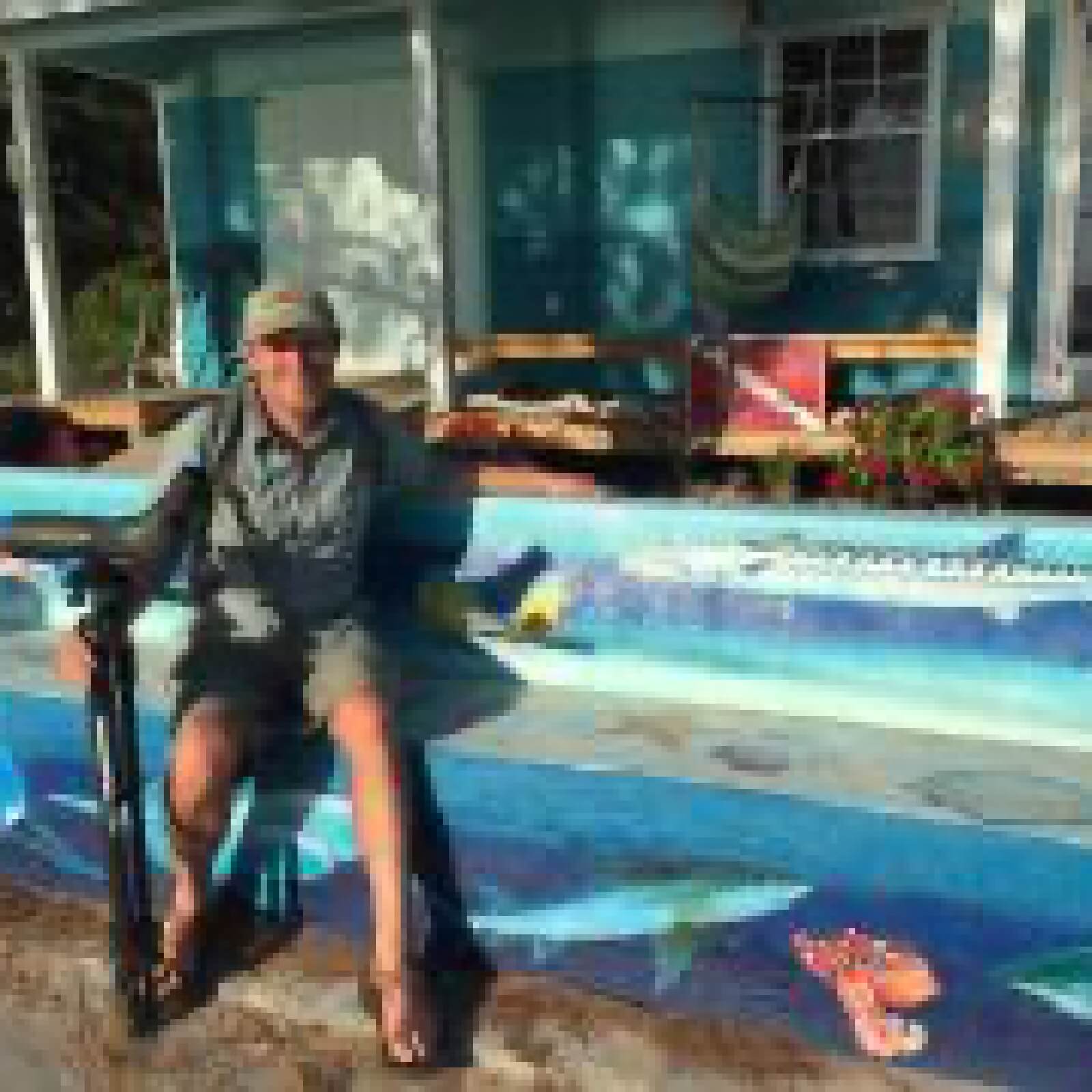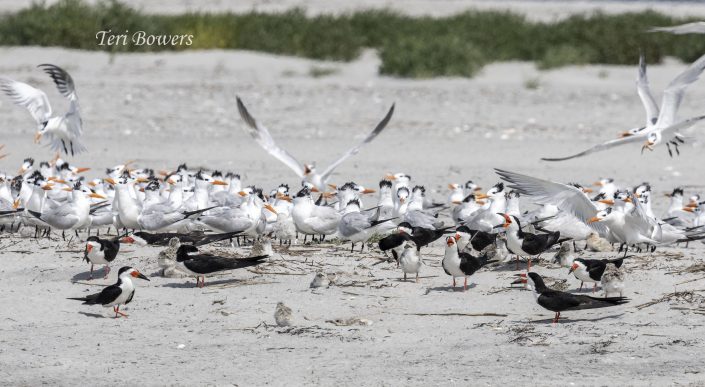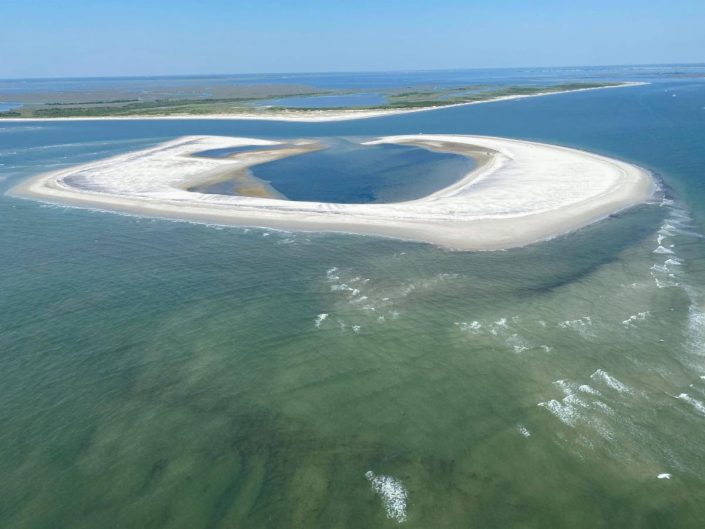Horseshoe Island: Success Continues to Grow Along with the Island
In late 2024 we closed out our third year of comprehensive monitoring and management of nesting and migratory birds at Horseshoe Island. The recently formed island, situated just outside the southern edge of Little Egg Inlet, has quickly become one of the most important beach nesting bird sites in New Jersey.
Each year has presented new challenges and changes on the island and in 2024 there were a number of “firsts” to report. Piping plovers had previously utilized the island to rest and forage during both the migration and breeding seasons, this was the first year that they nested there. Adding any new nesting site for piping plovers in New Jersey is big news, adding three pairs was even more exciting. Although all three pairs hatched young, no chicks successfully fledged from the island, but we hope to build on that initial success next year.
Horseshoe Island is home to the northernmost royal tern colony in the hemisphere and the colony has grown in size each year. In 2024, CWF joined New Jersey Fish and Wildlife (NJFW) and The Wetlands Institute (TWI) to band royal tern chicks, the first time that royal terns have been banded in the state. With their newly minted blue field readable bands, we are now able to track movements and longevity of “our royals.” Under NJFW’s direction, adult piping plovers were also banded at Horseshoe for the first time this year. Lastly, led by TWI, black skimmer chicks were once again banded on the island.

The island grew exponentially this year, it is now at least twice the size it was when monitoring began in 2021. The birds took advantage of the expanded habitat, upwards of 1400 state endangered black skimmers nested there in 2024, easily making it the largest skimmer colony in the state. And nearly 600 skimmer chicks fledged from the site, making it the most successful year to date for skimmers on Horseshoe Island. Large least and common tern colonies were also present. And American oystercatchers have increased from 6 to 16 breeding pairs since 2021; 2024 being the most productive year yet with 24 fledglings being recorded. Nearly every part of the island was in use, even more so if you factor in migratory and staging shorebirds that often crowd the tidal zones on the outer edges of the island and the interior lagoons for foraging.

Monitoring and management of the island is done as a partnership between CWF, NJFW, and Edwin B. Forsythe National Wildlife Refuge. For more information about the island, read the recently released 2024 report.


